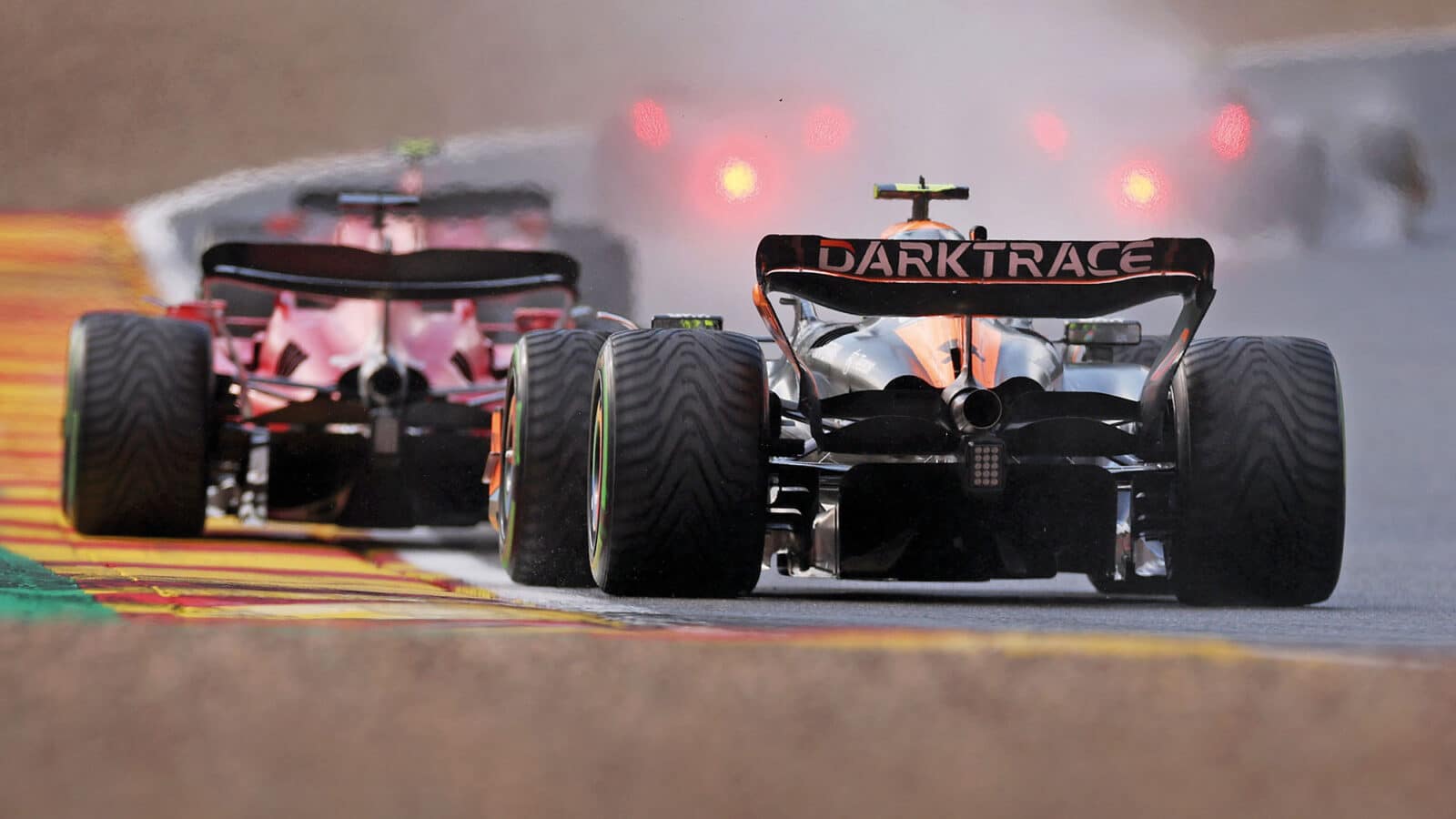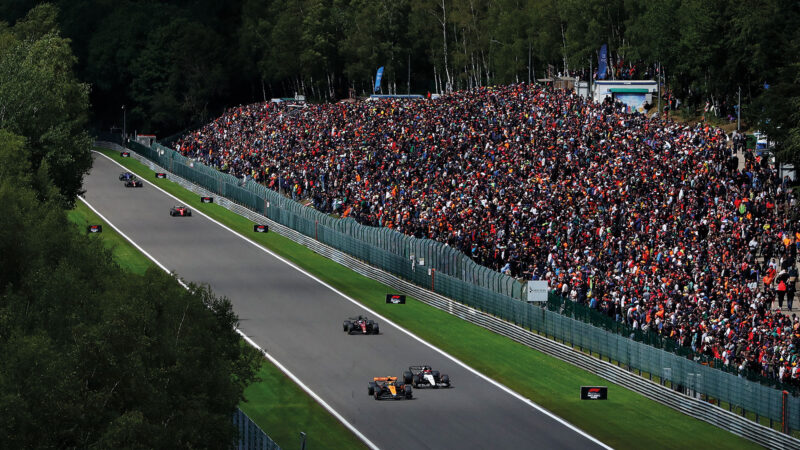Why wet weather saved McLaren’s race at 2023 Belgian Grand Prix
Without an appropriate rear wing, Lando Norris nosedived at the 2023 Belgian Grand Prix. But as Mark Hughes explains, precipitation at Spa proved an unlikely ally and disaster was averted

Lando Norris was an easy target along the straights in the early stage of the Belgian Grand Prix
Getty Images
Because it has been devoting its resources to the MCL60’s extensive recent upgrades, McLaren did not really have a suitable rear wing for Spa. The track places bigger demands on aero efficiency than probably any other on the calendar and McLaren’s standard low-downforce wing was simply nowhere near efficient enough, would have lost it way too much lap time through sector 2 than it could hope to make up in sectors 1 and 3. The wing it brought was big by Spa standards, costing it straightline speed, but was at least efficient enough to allow the car a decent lap time – and into the bargain made it super-competitive in the wet. This was to have a profound effect on the strategy for Lando Norris.
“We have to do something. I’m just going to get overtaken”
The big wing played its part in the McLarens proving so competitive in damp qualifying and although the better placed of them – Oscar Piastri – was out at the first corner with suspension damage from his collision with Carlos Sainz, Norris was running an initial seventh, tight behind Fernando Alonso’s Aston Martin. But that big wing’s straightline speed penalty made him a sitting duck away from the bends and in the early laps he was passed by car after car down the Kemmel Straight but with no passing places in the middle sector where his wing gave him an advantage, he had no way of retaliating: “I can’t stay in this pack,” he reported. “I get passed on the straight then held up in the middle section. We have to do something. I’m just going to get overtaken and go backwards. I need clear air.” As George Russell and Esteban Ocon slipstreamed by to demote him to 12th on the fifth lap, Norris radioed further: “That means now.” He was brought in on the following lap, switching from medium to hard tyres and rejoined three from the back.

A second pitstop for soft tyres reinvigorated Norris, who powered through the field
On the surface it looked like his race was ruined already, but actually it was an inspired call. It allowed him to run unimpeded, using the car’s performance to the full and in so doing making time on the field without having to race it wheel-to-wheel. By the 17th lap the radar was suggesting a smattering of light rain was on the way and by now he was getting mixed up once more with traffic, so he was brought in for his second stop and this time fitted with soft tyres in anticipation of the damp track to come.
This proved crucial. Making his second stop before many had even made their first got him back into clean air, allowing him to use his great performance in the middle sector, making time up on those cars yet to pit which would otherwise have been holding him up. But more than that, the combination of that big wing and fresh soft tyres made him devastatingly fast when the rain arrived two laps later. The rain stayed for five laps and during this time Norris was by far the fastest car on track, taking out more than 7sec even on race leader Max Verstappen. As other cars made their stops, Norris’s pace had elevated him back up to the seventh place he’d held at the start, but now far enough ahead that he was no longer vulnerable on the straights. Keeping his soft tyres in shape to the end retained him the position. It was a great strategic save from an apparent hopeless early dilemma.


